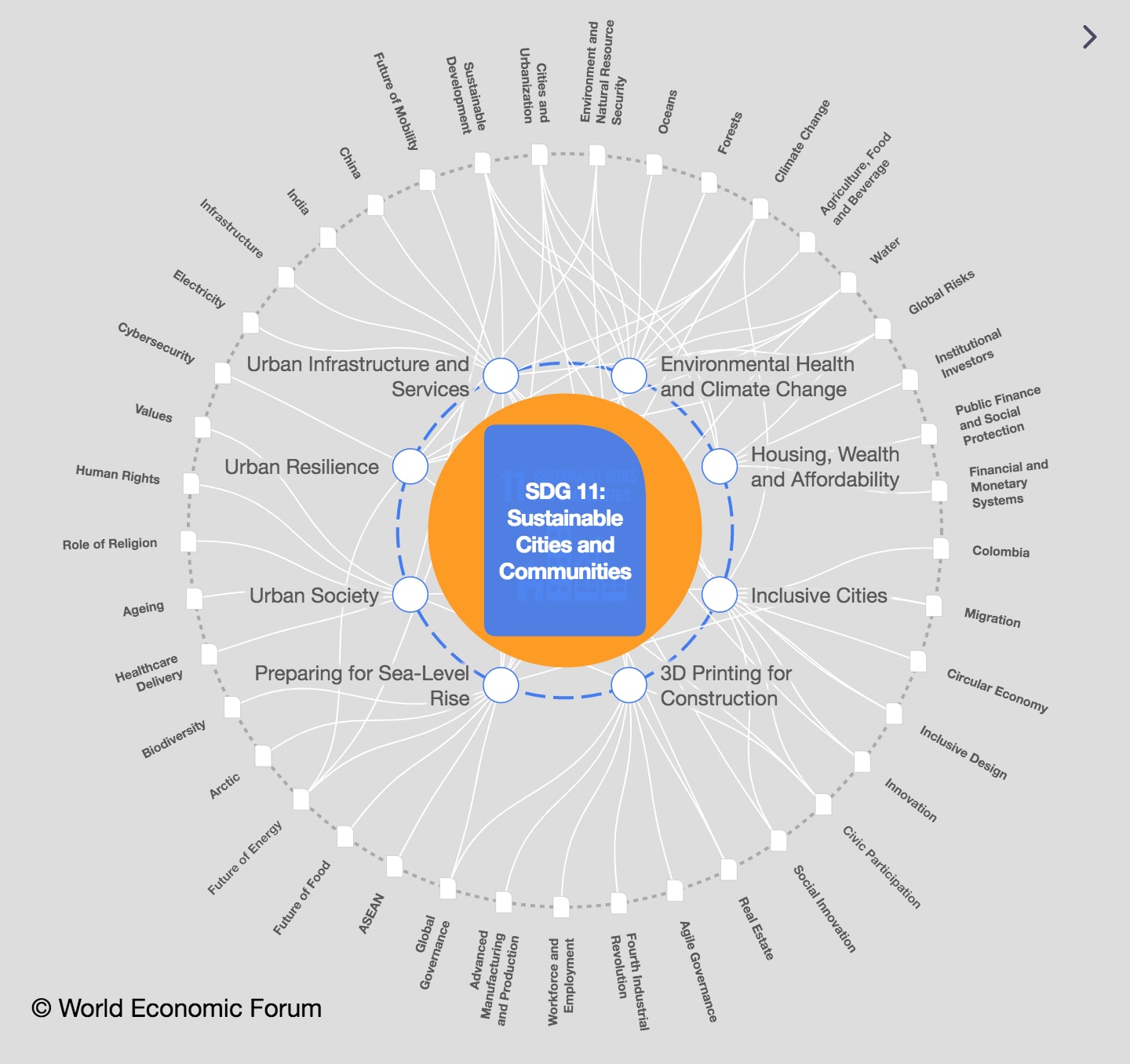Sustainable cement: the simple switch that could massively cut global carbon emissions

The world produces more than 10 billion tonnes of concrete each year.
Image: REUTERS/Abdalrhman Ismail
Stay up to date:
SDG 11: Sustainable Cities and Communities
- Cement is vital in the construction industry, being the glue that holds concrete together.
- But cement production accounts for around 8% of global CO₂ emissions.
- Low-carbon alternatives are available and could help to revolutionize the way we build cities to mitigate against climate change.
August 22 is Earth Overshoot Day, which marks the date when humanity’s demand for ecological resources in a given year exceeds what Earth can regenerate in that year. This results from massive consumption of ecological resources and accumulation of waste. A large portion of this comes from heavy industry and the way we build our cities.
Interestingly, Earth Overshoot Day in 2020 is almost exactly two years since Greta Thunberg initiated the first school strike for the climate. Over the past two years, she has inspired millions of people to fight for climate justice and a better future, and the European parliament declared a “climate and environmental emergency”.
At the same time, over those two years humans have emitted more than 80 billion tonnes of CO₂, and Earth has experienced the second hottest year on record. Despite the heightened awareness of the climate crisis, it is clear that much more needs to be done.
At the dawn of the industrial revolution approximately 200 years ago, the carbon footprint of humanity was close to zero. Today, humanity’s carbon footprint is more than half of our overall ecological footprint, resulting in humans using far more resources than could be renewed each year – equivalent to the renewable resources of 1.6 Earths.
Decarbonising industry and the economy is essential to improve the balance between our ecological footprint and the planet’s renewable resources. This would provide the best possible chance for humanity to mitigate the effects of climate change. Consequently, we need to rethink the way we build our cities. And to do this, we need to talk about cement.
Cement, the “glue” in concrete, is the durable, waterproof and ubiquitous material upon which modern civilisation is built. Concrete is second only to water in terms of commodity use, and the world produces more than 10 billion tonnes of it each year.
Recent reports have indicated that since the introduction of Portland cement around 200 years ago, our built environment is now outgrowing the natural environment that has existed for millions of years. This is driven primarily by rapid urbanisation. By 2050, 80% of the world’s population is expected to live in cities.
However, the ability to construct engineering masterpieces such as the Millau Viaduct and the Burj Khalifa comes with a high environmental cost. Cement production alone (excluding other aspects of construction) accounts for around 8% of global CO₂ emissions, about half of which results from chemical reactions inherent in the production process. As other industries such as energy and agriculture reduce their share of emissions, cement production may account for nearly a quarter of all human-driven CO₂ emissions by 2050.
Shifting completely to sustainable cement could, depending on technology used, save between 1.72 and 2.75 billion tonnes of CO₂ emissions annually, moving Earth Overshoot Day back by approximately ten days. These are savings that could be achieved today. By 2050, the savings could reach between 7.25 and 11.60 billion tonnes of CO₂ emissions annually, moving Earth Overshoot Day back by approximately 40 days.
This reduction in carbon footprint can be achieved solely by changing the type of cement we use to build cities and infrastructure. Further savings are achievable with more efficient design and the use of sustainable cements with enhanced performance, so that less cement (and hence less carbon) is required to achieve the same outcome.
Making cement more sustainable
Many low-CO₂ cements have emerged as attractive, more sustainable alternatives to traditional Portland cement. Portland cement is produced by heating a mixture of limestone and other minerals to around 1,450°C, a process that results in chemical reactions that release large amounts of CO₂.
But other materials are also widely used in concrete, including those largely generated from industrial waste or by-products such as coal fly ash, blast furnace slag, calcined clays, finely ground limestone or silica fume. They are used either by blending with traditional cement, or as a binder (or “glue”) themselves, without any Portland cement.
Importantly, the way these materials are produced results in far lower CO₂ emissions than Portland cement. This can reduce CO₂ emissions by between 50% and 80%, depending on the technology used.
Using these materials in cement provides enhanced strength and durability, and also improves sustainability by reducing associated CO₂ emissions and recycling industrial wastes. Many of these cements have been highlighted in the United Nations Environment Programme 2016 report as having greatest potential for cement-related CO₂ emissions reduction.
Despite the extensive environmental and technical benefits achievable, the construction industry has been slow to take up sustainable cement technologies, which have instead been focused primarily in smaller niche markets. This has limited the industry’s ability to decarbonise.
One thing has become increasingly clear in recent years. If we are to mitigate the existential crisis in which we find ourselves, action must be taken now. The Paris Agreement commits world leaders to respond to the threat of climate change by keeping the global average temperature rise to below 2°C, and aiming for 1.5°C.
To achieve this, it is essential that we revolutionise the way in which we build our cities, shifting to sustainable cement technologies that reuse industrial wastes and drive a circular economy. The solutions are within reach. And our future depends on it.
Accept our marketing cookies to access this content.
These cookies are currently disabled in your browser.
Accept our marketing cookies to access this content.
These cookies are currently disabled in your browser.
Accept our marketing cookies to access this content.
These cookies are currently disabled in your browser.
Don't miss any update on this topic
Create a free account and access your personalized content collection with our latest publications and analyses.
License and Republishing
World Economic Forum articles may be republished in accordance with the Creative Commons Attribution-NonCommercial-NoDerivatives 4.0 International Public License, and in accordance with our Terms of Use.
The views expressed in this article are those of the author alone and not the World Economic Forum.
Related topics:
Forum Stories newsletter
Bringing you weekly curated insights and analysis on the global issues that matter.
More on Sustainable DevelopmentSee all
Marco Lambertini and Marcelo Bicalho Behar
November 6, 2025
Pedro Leitao
November 5, 2025
Aimée Dushime
November 4, 2025
Jeff Merritt and Andras Szorenyi
November 3, 2025
Marielle Anzelone and Georgia Silvera Seamans
October 31, 2025






